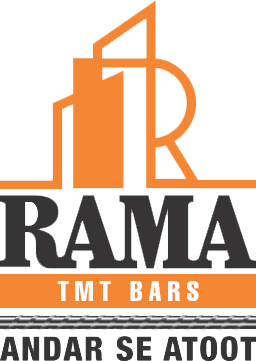When constructing a bridge, one of the most important factors is ensuring that it is strong, durable, and safe for long-term use. Thermo-mechanically treated (TMT) bars play a crucial role in achieving this. These high-strength bars, made from steel, are known for their superior properties, which make them an ideal choice in bridge construction. Let’s break down the advantages of using TMT bars in simple terms.

1. High Strength: TMT bars are incredibly strong. They are designed to handle heavy loads and pressures, which is critical for bridges that support vehicles, pedestrians, and sometimes even trains. The bars provide the necessary strength to the concrete used in the bridge, helping it withstand all kinds of forces and making the structure more resilient.
2. Corrosion Resistance: Bridges are often exposed to moisture, whether from rain, rivers, or the sea. This moisture can cause metal components to rust and weaken over time. One of the biggest advantages of TMT bars is their corrosion resistance. Their special manufacturing process makes them less likely to rust, which is essential for bridges built in humid or coastal regions.
3. Ductility and Flexibility: While TMT bars are strong, they are also flexible. This flexibility, also known as ductility, allows the bars to bend without breaking under stress. In bridge construction, this is a crucial feature, especially in areas prone to earthquakes or heavy traffic loads. The bars can absorb shocks and vibrations, reducing the chances of cracks or structural failures in the bridge.
4. Better Bonding with Concrete: TMT bars have a ribbed surface, which helps them bond better with the concrete used in bridge construction. This strong bond between the steel and concrete ensures that the two materials work together to make the bridge more stable and durable. A good bond means fewer cracks and less wear and tear over time.
5. Fire Resistance: Bridges may occasionally be exposed to high temperatures, whether due to environmental factors or accidents. TMT bars have high thermal stability, meaning they can withstand extreme heat without losing their strength. This fire-resistant quality is another reason why they are a preferred choice in bridge construction.
6. Cost-Effective: TMT bars offer high performance at a reasonable cost. Their strength and durability mean fewer repairs and maintenance costs over the years. Additionally, since these bars can be used in smaller quantities compared to traditional steel bars, the overall cost of bridge construction is reduced, making it a more economical choice for builders.
7. Longevity: One of the key goals of bridge construction is longevity. Bridges are built to last for decades, often without needing major repairs. The combination of high strength, corrosion resistance, and flexibility offered by TMT bars ensures that the bridge structure remains intact and safe for longer periods, even under challenging environmental conditions.
8. Eco-Friendly Manufacturing: TMT bars are produced in an environmentally friendly way. The process consumes less energy, and the bars can be recycled after their lifespan. Thus, using TMT bars in bridge construction benefits the structure and supports sustainability goals.
In bridge construction, ensuring structural integrity, safety, and longevity is of utmost importance. TMT bars, with their unmatched strength, flexibility, corrosion resistance, and cost-effectiveness, are the backbone of modern bridges.
By choosing TMT bars, builders can create bridges that not only stand strong against time and the elements but also require less maintenance, making them a smart investment for the future. For anyone involved in bridge construction, partnering with a reliable TMT bar manufacturer and supplier ensures using the best materials for durable, safe, and long-lasting structures.
